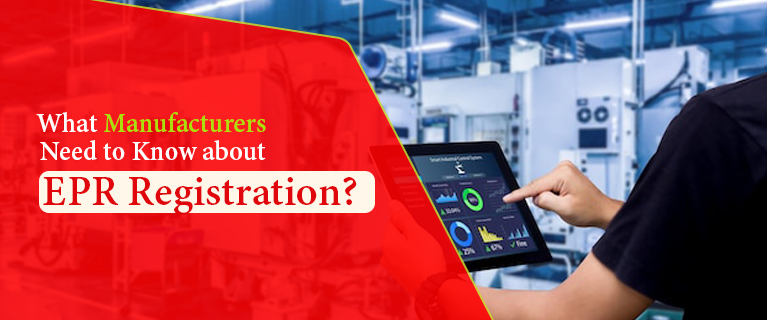What Manufacturers Need To Know About EPR Registration?
The global manufacturing industry is witnessing a significant shift towards sustainability and environmental responsibility. One of the pivotal steps in this direction is the implementation of Extended Producer Responsibility (EPR) programs. EPR Registration is a crucial aspect that manufacturers need to be well-versed in. This comprehensive guide will provide manufacturers with all they need to know about EPR Registration, including its significance, the registration process, and the benefits it offers.
Understanding EPR: A Green Initiative
Extended Producer Responsibility (EPR) is a policy approach that mandates manufacturers to take responsibility for the entire lifecycle of their products, including post-consumer stages. The primary goal is to reduce the environmental impact of products and promote their recycling and safe disposal. Manufacturers are required to establish and manage collection and recycling systems for their products, contributing to a circular economy.
Read Also This - EPR Registration in Packaging & InnovationsThe Significance of EPR Registration:
EPR Registration is a formal process that signifies a manufacturer's commitment to environmental stewardship. Its significance lies in:
- Environmental Conservation: EPR programs aim to reduce the environmental footprint of products by ensuring their proper management and disposal. This helps in minimizing pollution, conserving resources, and protecting ecosystems.
- Compliance and Legal Obligation: In many regions, EPR programs are mandated by law. Manufacturers need to register and participate in these programs to meet their legal responsibilities.
- Consumer Trust and Reputation: Companies that actively participate in EPR programs are perceived as environmentally responsible. This enhances consumer trust, boosts brand reputation, and attracts environmentally conscious customers.
- Resource Efficiency: EPR encourages manufacturers to design products with recycling and resource efficiency in mind. This promotes the efficient use of materials and minimizes waste.
- Circular Economy: EPR fosters the principles of a circular economy where products and materials are reused, remanufactured, or recycled, reducing the need for virgin resources.
The EPR Registration Process:
The EPR Registration process typically involves the following steps:
Determining Applicability: Manufacturers need to assess whether they fall under the purview of EPR regulations based on product categories and regional laws.
Registration Submission:Manufacturers must submit their registration applications to the relevant regulatory authorities. These applications should include detailed plans for product collection, recycling, and disposal.
Compliance with Reporting: Manufacturers are required to maintain records and submit periodic reports on the quantities of products placed on the market and the performance of their EPR systems.
Financial Responsibility: Some EPR programs necessitate manufacturers to provide financial guarantees or contributions to fund the recycling and collection systems.
Audits and Inspections:Regulatory authorities may conduct audits and inspections to ensure compliance with EPR obligations.
EPR Registration Benefits for Manufacturers:
EPR Registration offers several benefits to manufacturers, including:
- Environmental Contribution: Manufacturers play a pivotal role in reducing the environmental impact of their products, contributing to a greener planet.
- Legal Compliance: Registering and participating in EPR programs ensures legal compliance, preventing potential fines and penalties.
- Resource Efficiency: EPR encourages resource-efficient product design, potentially reducing production costs.
- Consumer Appeal: Environmentally conscious consumers are more likely to choose products from companies actively engaged in EPR programs.
- Brand Reputation: EPR participation enhances brand reputation, fostering trust and loyalty among consumers.
- Market Access: Compliance with EPR regulations can facilitate market access, especially in regions where EPR is mandated.
Challenges and Compliance:
Despite the numerous benefits, manufacturers may face challenges in EPR compliance, such as:
- Complexity of Regulations: EPR regulations can be intricate and vary by region, making compliance challenging.
- Resource Allocation: Manufacturers may need to allocate resources for collection, recycling, and reporting, which can be costly.
- Operational Changes: Implementing EPR may require operational changes, affecting supply chains and logistics.
Conclusion
EPR Registration is a pivotal step for manufacturers in their commitment to environmental responsibility and legal compliance. It plays a crucial role in reducing the environmental impact of products, conserving resources, and fostering a circular economy. While EPR compliance may pose challenges, the long-term benefits of EPR Registration outweigh the initial hurdles. As global awareness of environmental issues continues to grow, EPR is expected to play an increasingly significant role in the manufacturing industry's sustainable future. Manufacturers should embrace this paradigm shift towards environmental responsibility for a greener and more sustainable world.



Comments
Post a Comment